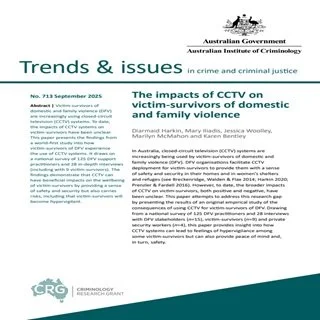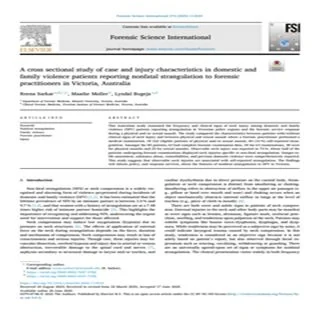By Diarmaid Harkin, Mary Iliadis, Jessica Woolley, Marilyn McMahon and Karen Bentley
Victim-survivors of domestic and family violence (DFV) are increasingly using closed-circuit television (CCTV) systems. To date, the impacts of CCTV systems on victim survivors have been unclear. This paper presents the findings from a world-first study into how victim survivors of DFV experience the use of CCTV systems. It draws on a national survey of 125 DFV support practitioners and 28 in-depth interviews (including with 9 victim-survivors). The findings demonstrate that CCTV can have beneficial impacts on the wellbeing of victim-survivors by providing a sense of safety and security but also carries risks, including that victim-survivors will become hypervigilant.
Trends & issues in crime and criminal justice no. 713. Canberra: Australian Institute of Criminology, 2025. 17p.




